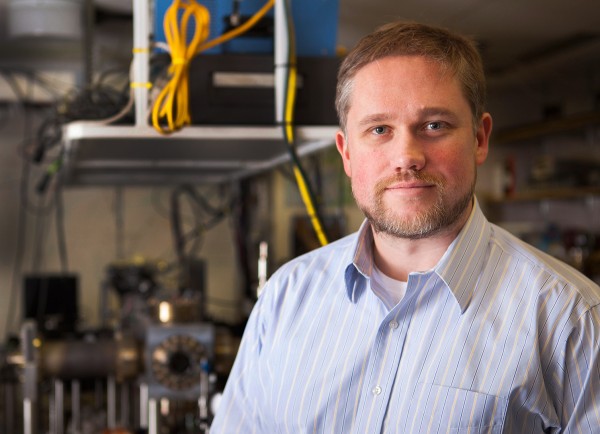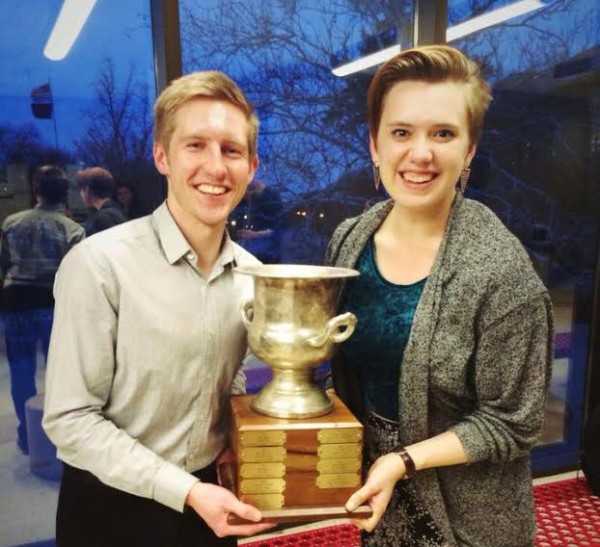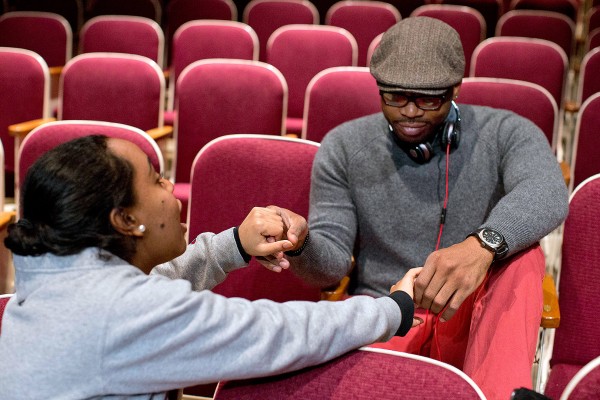Highlights from 2013–14
Take a look back on the 2013–14 academic year, and you’ll see honors, accolades, new courses — and new residence halls on the way. It was a great year to be a Bobcat.
1. Lundblad project selected for new International Space Station laboratory
Bates atomic physicist Nathan Lundblad is one of just a handful of scientists chosen by NASA to perform research with the Cold Atom Laboratory, a refrigerator-sized apparatus designed to create the coldest known environment in the universe.
“I’ll have a chance to do science that I couldn’t do otherwise.”
Ultracold environments are required to study phenomena such as superconductivity, superfluidity and Bose-Einstein condensates.
“I’ll have a chance to do science that I couldn’t do otherwise,” said Lundblad, the only physicist selected from an undergraduate liberal arts college. “I’m excited for my students, that they’ll have opportunities to do research at this level. And it raises the profile of science at liberal arts colleges like Bates to be able to participate in work like this.”
The Cold Atom Lab will be deployed to the space station in 2016.
2. Debate champs strike a blow for the amateur ideal
The team of Jac Stewart ’14 of Keene, N.H., and Taylor Blackburn ’15 of Atherton, Calif., won the U.S. Universities Debating Championship at Purdue University in April.
Totally cool.
And what’s amazing is that the Brooks Quimby Debate Council remains one of the few elite debate teams that accepts and trains all interested students, regardless of prior experience.
3. Bates named a Fulbright ‘top producer’ yet again
Bates was again named a “top producer” of Fulbright U.S. Student grants in 2013-14.
The college’s Fulbright pipeline has key people at each turn, says Matthew Auer, vice president for academic affairs and dean of the faculty. These professors and advisers “help discover strong student candidates early in their college careers.
“When you have talented teacher-scholars mentoring very bright, internationally oriented students, you get great results in the fellowship arena,” Auer says.
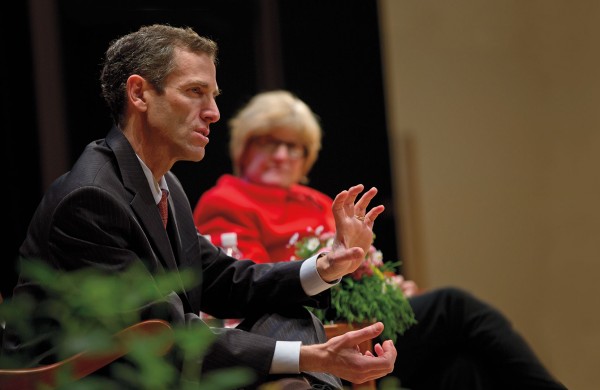
4. Emily Bamford ’15 makes Australian Olympic team
Selected to the Australian Olympic team, Emily Bamford ’15 of Melbourne became the 11th Bobcat, first alpine skier and first current Bates student to appear in the Olympics.
5. Testing the strength of a creative partnership
Seniors Bethel Kifle of Chicago and Jourdan Fanning of Memphis, Tenn., teamed up to co-direct this year’s Sankofa production, a demanding student project that presents an array of artistic interpretations of the African diaspora.
A month before the January production, Kifle’s brother died. She left campus immediately to be with her family, “leaving Sankofa and the rest of the planning process to Jourdan,” Kifle said.
In this early January photo, just 11 days before showtime, Kifle, at left, reaches out to Fanning.
“I realized,” she said, “that despite my return to campus, he continued to shoulder the heavy weight that comes with planning the production. I wanted to take a moment to remind him that he is not alone, I and others can help. I believed in us, and Sankofa would be amazing because we tried our very best.”
6. Clayton Spencer’s take on Short Term
At a presidential event in Boston in March, President Clayton Spencer and Al Filreis P’16, the Kelly Professor of English at the University of Pennsylvania, talked the liberal arts and the rise of massive open online courses, or MOOCs.
Along the way, Spencer said, “my feeling is that we have to optimize Short Term as a site for experimentation,” which neatly leads into moment No. 7, below.
7. Experimental courses ‘create new oxygen for the curriculum’
Reflecting two key college initiatives, the Engaged Liberal Arts1 and Purposeful Work2 , Bates deployed nine experimental courses during Short Term.
Four were “practitioner-taught” courses led by experts, all alumni this time around, in the fields of graphic design, healthcare administration, social-change organizing and digital entrepreneurship.
The other five courses, known as “course redesign,” gave students the chance to team up with a professor to rework an existing semester course or create a whole new one.
The five refreshed courses will be deployed during the coming fall and winter semesters.
The big takeaway is that “we’re all about a continuous process of renewal,” says President Spencer. New and revised courses “create new oxygen for the curriculum.”
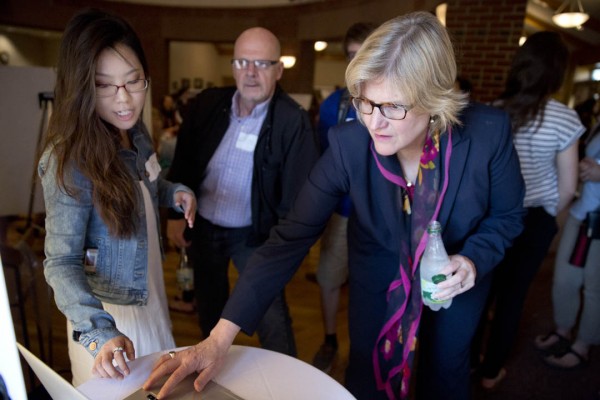
8. From Bates’ past comes a ‘beautiful definition of equality’ on Commencement Day
Commencement speakers like to cozy up to their audience with a few well-researched bon mots.
Pulitizer Prize-winning journalist Isabel Wilkerson, this year’s Bates Commencement speaker, did better than most with her research on Bates.
Wilkerson looked all the way back to 1879 to quote one of Bates’ earliest black graduates, Thomas James Bollin. In an article written for The Bates Student about equality, Bollin wrote that “social equality is the brotherhood of man in every condition.”
Quoting Bollin, Wilkerson said that his is a “beautiful definition of equality.” We agree!
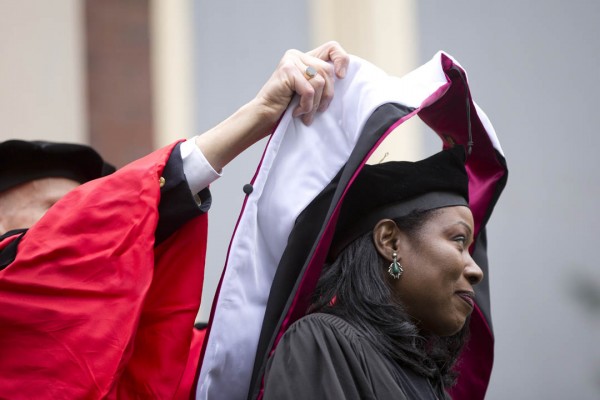
9. President Spencer goes from the lab to the White House
OK, so this is two moments wrapped into one.
In 2013-14, President Spencer joined 13 college and university presidents for the launch of the Presidential Innovation Lab, a project organized by the American Council on Education.
The lab is an effort to examine how various technology-driven models for teaching and learning (such as massive open online courses, or MOOCs) can boost the number of Americans able to earn a college degree.
In January, Spencer joined another select group of college leaders at the White House for a summit on college opportunity hosted by President Barack Obama and First Lady Michelle Obama.
The two gigs reflected a key Bates theme of 2013-14: How can the college most effectively engage the various forces now changing the face of U.S. higher education?
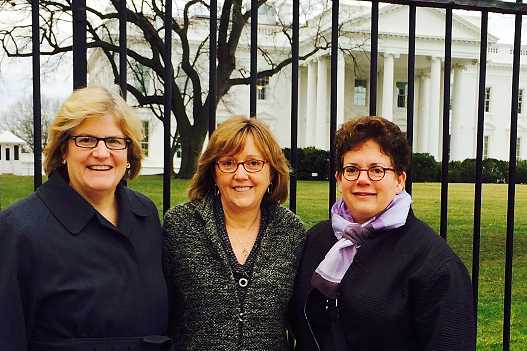
10. Bates advances to first-ever NESCAC Championship tournament
“I knew we were talented enough to do it, and we really are 34 guys playing as one,” said head coach Mike Leonard after Bates secured a berth in the NESCAC Championship tournament with a late-season win over Colby.
“I think overall the biggest key to the success we’ve been having is guys buying into the team concept.”
The NESCAC berth was the first for Bates baseball since the inception of the conference tournament in 2001. In the double-elimination tourney, Bobcat losses to Wesleyan and Tufts were sandwiched around a victory over Amherst.
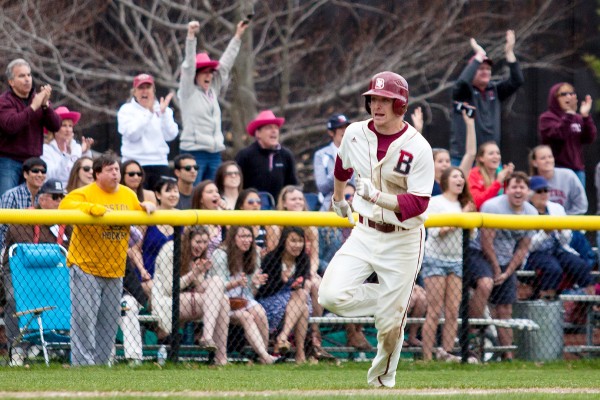
11. What Does the Fox Bobcat Say?
The Bates parody of Ylvis’ “What Does the Fox Say” racked up 24,000 views during its run in November.
It’s OK to try such a parody, said Joe Kuffner of the blog Social Media for Colleges. “But you damn well better do a fantastic job.” Among the many “Fox” parody videos, he said, the Bates version “might be the best one!”
12. Soliloquy by Brittany Davis ’14 explains ‘all of those things,’ and more
In an amazing senior thesis performance in last fall’s mainstage play, In the Next Room (or the vibrator play), Brittany Davis ’14 of Chicago played Elizabeth, an African American wet nurse who, for most of the play, is talked about or examined by the white characters.
Late in the play, Davis has a soliloquy. In that moment, Davis says she was able to “show you that Elizabeth could be happy. She could be sad. She could be loyal. She could be kind. She could be generous. That’s what I think people took away from that moment — that Elizabeth was all of those things, and that we all are so much more than what we seem.”
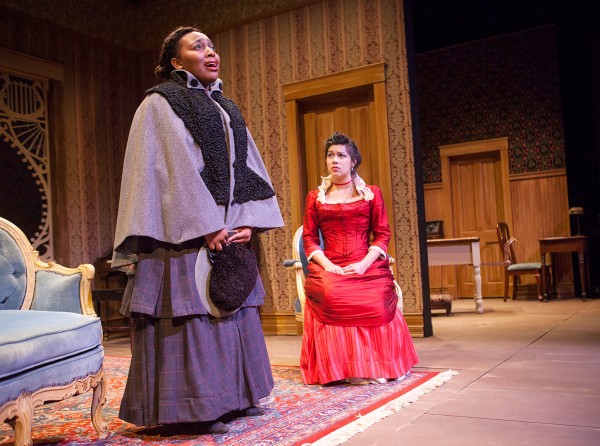
13. Philosopher Thomas Tracey wins the Kroepsch Award for Excellence in Teaching
In receiving the award, Tracey neatly distilled why studying philosophy matters. Philosophy “complicates the world and allows you to live a life that is in conversation with a more diverse range of human beings, across intellectual and cultural differences — and also in time, across historical differences.” In the end, studying philosophy has “intrinsic value…that makes for a richer and more interesting life.”
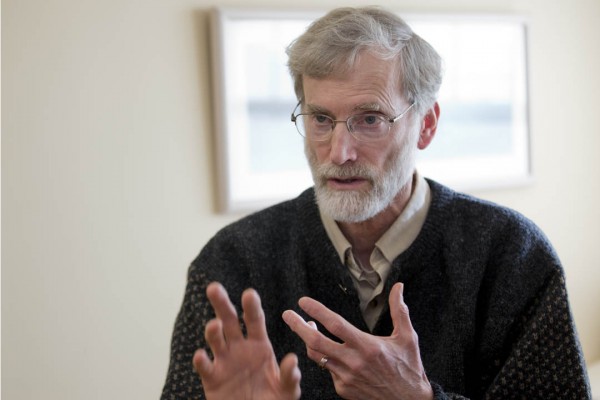
14. New housing announced for Campus Avenue
Creation of two new residence halls with 230 new beds on Campus Avenue, across from Chase Hall, is the first phrase of the Campus Life project, intended to establish a dynamic center of college life on the south side of campus.
Readers aware of the college’s expansion from 850 students a half-century ago to today’s approximately 2,000 students (on campus and studying abroad) should note that this project is not about adding students.
Instead, the goal is to strengthen the four-year residential experience for all students. The new housing gives Bates the capacity to shift students from overcrowded or outmoded residences, notably Smith Hall and some wooden houses on Frye Street, that in turn will be improved and restored.
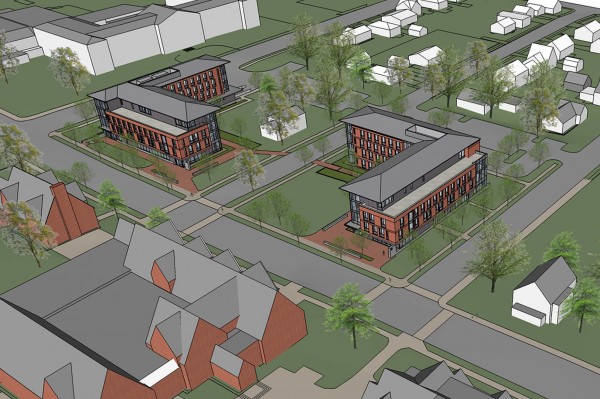
1 The “engaged liberal arts” means delivering a rigorous and highly personalized education that centers on deep and sustained interactions among students, faculty, and community. It also means engaging the forces — intellectual trends, demographic changes, and technology — that are transforming higher education and the world into which our students graduate. It means making a virtue of our scale; creating a diverse and motivated community of students, faculty, and staff; and embracing innovative and evidence-based approaches to teaching and learning. back to story
2 Purposeful work is a college-wide initiative built on the premise that preparing students for lives of meaningful work lies at the heart of the liberal arts mission. When fully developed it will include: (1) a co-curricular program involving cycles of exploration, reflection, and skill-building; (2) practitioner-taught courses during short term, and (3) a highly-structured Bates-specific network of internships, with the hope to guarantee every Bates student a paid internship that is either employer- or Bates-sponsored. back to story
